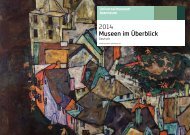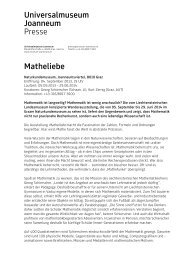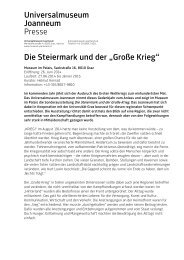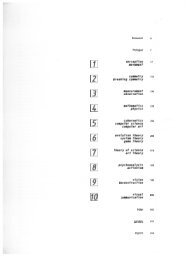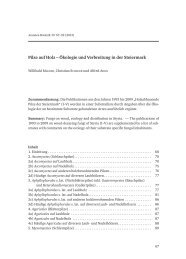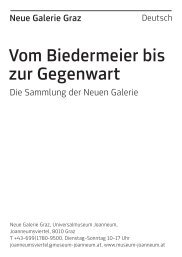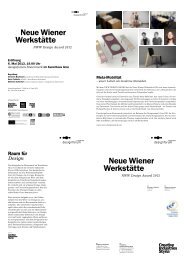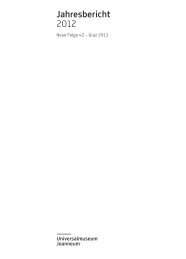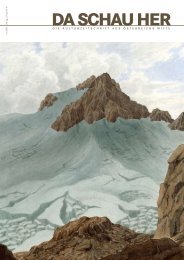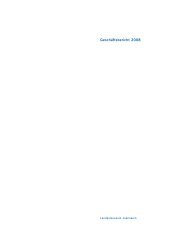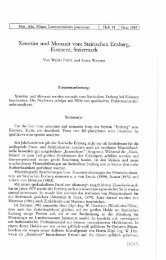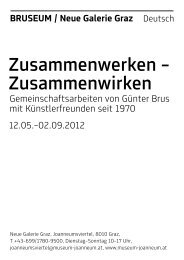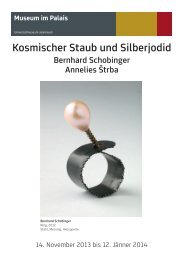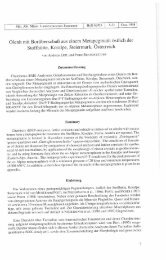Diana Thater gorillagorillagorilla - Universalmuseum Joanneum
Diana Thater gorillagorillagorilla - Universalmuseum Joanneum
Diana Thater gorillagorillagorilla - Universalmuseum Joanneum
Sie wollen auch ein ePaper? Erhöhen Sie die Reichweite Ihrer Titel.
YUMPU macht aus Druck-PDFs automatisch weboptimierte ePaper, die Google liebt.
Not even the lark sees the open.<br />
Martin Heidegger<br />
At stake in the course is the definition of the concept<br />
of “open” as one of the names, indeed as the name<br />
kat’exoche – n {preeminent}, of being and of world. More<br />
than ten years later, in full world war, Heidegger returns<br />
to this concept and traces a summary genealogy of it.<br />
That it arose out of the eighth Duino Elegy was, in a<br />
certain sense, obvious; but in being adopted as the<br />
name of being (“the open, in which every being is freed …<br />
is being itself”1), Rilke’s term undergoes an essential re‑<br />
versal, which Heidegger seeks to emphasize in every<br />
way. For in the eighth Elegy it is the animal (die Kreatur)<br />
that sees the open “with all its eyes”, in distinct contrast<br />
to man, whose eyes have instead been “turned backward”<br />
and placed “like traps” around him. While man always<br />
has the world before him – always only stands “facing<br />
opposite” (gegenüber) and never enters the “pure space”<br />
of the outside – the animal instead moves in the open,<br />
in a “nowhere without the no”.<br />
This reversal of the hierarchical relationship between man<br />
and animal is precisely what Heidegger calls into question.<br />
First of all, he writes, if we think of the open as the name<br />
of what philosophy has thought of as ale – theia, that is, as<br />
the unconcealedness‑concealedness of being, then this<br />
is not truly a reversal here, because the open evoked by<br />
Rilke and the open that Heidegger’s thought seeks to give<br />
back to thought have nothing in common. “For the open<br />
meant by Rilke is not the open in the sense of the uncon‑<br />
cealed. Rilke knows and suspects nothing of ale – theia,<br />
no more than Nietzsche does.”2 At work in both Nietzsche<br />
and Rilke is that oblivion of being “which lies at the foun‑<br />
dation of the biologism of the nineteenth century and of<br />
psychoanalysis” and whose ultimate consequence is “a<br />
monstrous anthropomorphization of … the animal and<br />
a corresponding animalization of man”.3 Only man, indeed<br />
only the essential gaze of authentic thought, can see the<br />
open which names the unconcealedness of beings. The<br />
animal, on the contrary, never sees this open.<br />
“Therefore neither can an animal move about in the<br />
closed as such, no more than it can comport itself toward<br />
the concealed. The animal is excluded from the essential<br />
domain of the conflict between unconcealedness and<br />
Giorgio Agamben 74 75<br />
concealedness. The sign of such an exclusion is that<br />
no animal or plant ‘has the word’.”4<br />
At this point Heidegger, in an extremely dense page,<br />
explicitly evokes the problem of the difference between<br />
animal environment and human world which was at<br />
the center of the 1929–30 course:<br />
“For the animal is in relation to his circle of food, prey,<br />
and other animals of its own kind, and it is so in a way<br />
essentially different from the way the stone is related<br />
to the earth upon which it lies. In the circle of the living<br />
things characte rized as plant or animal we find the<br />
peculiar stirring of a motility by which the living being is<br />
‘stimulated’, i.e., excited to an emerging into a circle of<br />
excitability on the basis of which it includes other things<br />
in the circle of its stirring. But no motility or excitability of<br />
plants and animals can ever bring the living thing into the<br />
free in such a way that what is stimulated could ever let<br />
the thing which excites ‘be’ what it is even merely as exci‑<br />
ting, not to mention what it is before the excitation and<br />
without it. Plant and animal depend on something outside<br />
of themselves without ever ‘seeing’ either the outside or<br />
the in side, i.e., without ever seeing their being uncon‑<br />
cealed in the free of being. It would never be possible for<br />
a stone, any more than for an airplane, to elevate itself<br />
toward the sun in jubilation and to stir like the lark, and<br />
yet not even the lark sees the open.”5<br />
The lark (this symbol, in our poetic tradition, of the<br />
purest amorous impulse – one thinks, for example,<br />
of Bernart de Ventadorn’s lauzeta) does not see the<br />
open, because even at the moment in which it rushes<br />
toward the sun with the greatest abandon, it is blind<br />
to it; the lark can never disconceal the sun as a being,<br />
nor can it comport itself in any way toward the sun’s<br />
concealedness (just like Uexküll’s tick with respect to<br />
its disinhibitors.) And precisely because the “essential<br />
border between the mystery of the living being (plant<br />
or animal) and the mystery of what is historical”6 is<br />
neither experienced nor thematized in Rilke’s poetry,<br />
the poetic word here falls short of a “decision capable<br />
of founding history”, and is constantly exposed to the<br />
risk of “an unlimited and groundless anthropomorphiza ‑<br />
tion of the animal”, which even places the animal above<br />
man and in a certain way makes a “super‑man”7 of it.



